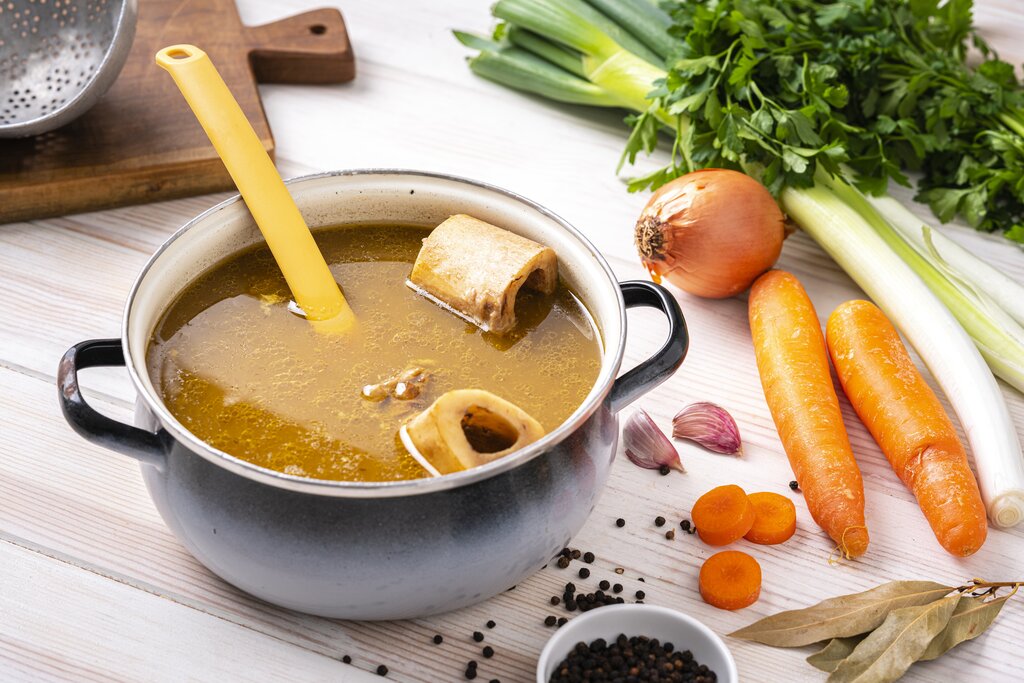So, what's so great about a soup which essentially just sounds like 'meat water'?
Advocates of bone broth claim that it can relieve joint pain and arthritis, detoxify the liver, help speed up wound healing time, promote digestive health, increase energy, support strong bones, and boost immune function.
Are the benefits of bone broth supported by science? While studies to support these claims in humans have yielded mixed results, scientific data around bone broth's benefits in pets is unfortunately limited and non-existent. As yet, the jury is still out as to whether eating bone broth can truly benefit your pet's health!
However, one indisputable benefit of bone broth is its palatability. Dogs and cats love the taste of bone broth. It can be used to tempt fussy eaters, or to help stimulate the appetite of sick or unwell pets. (Just be careful in pets with upset tummies though, as the rich, fatty gelatin might not be what they need!)
Bone broth is often described as high essential minerals such as calcium and phosphorus. However, most recipes of bone broth are not found to be remarkably high in calcium at all. In fact one study found that Calcium in bone broth is actually quite low1. In general, the claim that bone broth is high in calcium - akin to the levels found in milk - is mostly considered to be a myth.
Another claim is that bone broth is quite high in protein. For this claim, it really depends on the specific recipe itself. One study found that the levels of protein in a number of different commerically-product bone broths were markedly varied.2 Some recipes are high in protein, and some are not. Always check with the label if you're after a nutritious, high-protein broth.
Other attributes of bone broth include its high levels of collagen and gelatin, as well as essential amino acids. While many people rave about gelatin's effects on their gut health, it generally doesn't ring true that eating collagen translates to healthier collagen in the body (such as healthier joints or stronger skin). Collagen eaten in the food is broken down by the body into amino acids, which means it is effectively used as a source of protein (and not a very efficient source, unfortunately).



